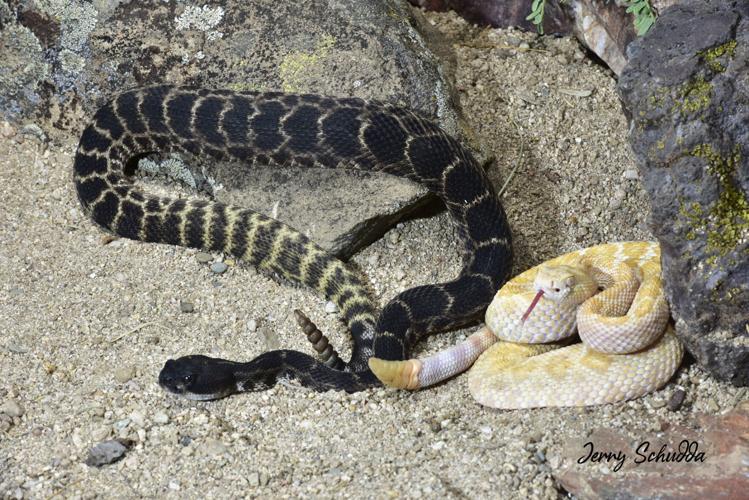One day, several years ago, I saw a very strange looking snake crawling across a trail. It was a kingsnake, but without the yellow and black ring patterns—in fact, it had no pattern, but had pink eyes and was all white. I had come across a very rare find: an albino snake. Albinism is a condition in which there is an absence of melanin. Melanin is what is present in the skin and is what gives skin, feathers, scales hair and eyes their color. Albinism is the result of cells that can't produce melanin.
Albino Kingsnake
When albinism is present, the animal can appear white or pink. The gene responsible for albinism is recessive, so it is only expressed if both parents transfer it to their offspring. Leucism is only a partial loss of pigmentation, which can make the animal have white or patchily colored skin, hair, scales or feathers. However, the pigment cells in the eyes are not affected by the condition.
On the other hand, melanism, which is also hereditary, and is produced by the mutation of different genes, results in an excess of dark pigmentation in an animal. Melanistic organisms have an increased amount of black or nearly black pigmentation (as of skin, feathers, scales or hair).
Melonistic and Leucistic Diamondback Rattlesnakes
There are also other cases of altered pigmentation. Erythrism is abundance of red or orange coloration. Lutein is the abundance of yellow pigment and lack of other pigments. And axanthism is the opposite: the absence of yellow pigment.
Keep in mind that we can arrange for small (one to six) family groups to visit our nature program at Catalina State Park:
Contact Jerry Schudda by email at jschudda@gmail.com or call (520) 235-6899. Reach out to Jim Cloer. Send him an email at Jcloer4243@gmail.com or call (520) 818-3545.





